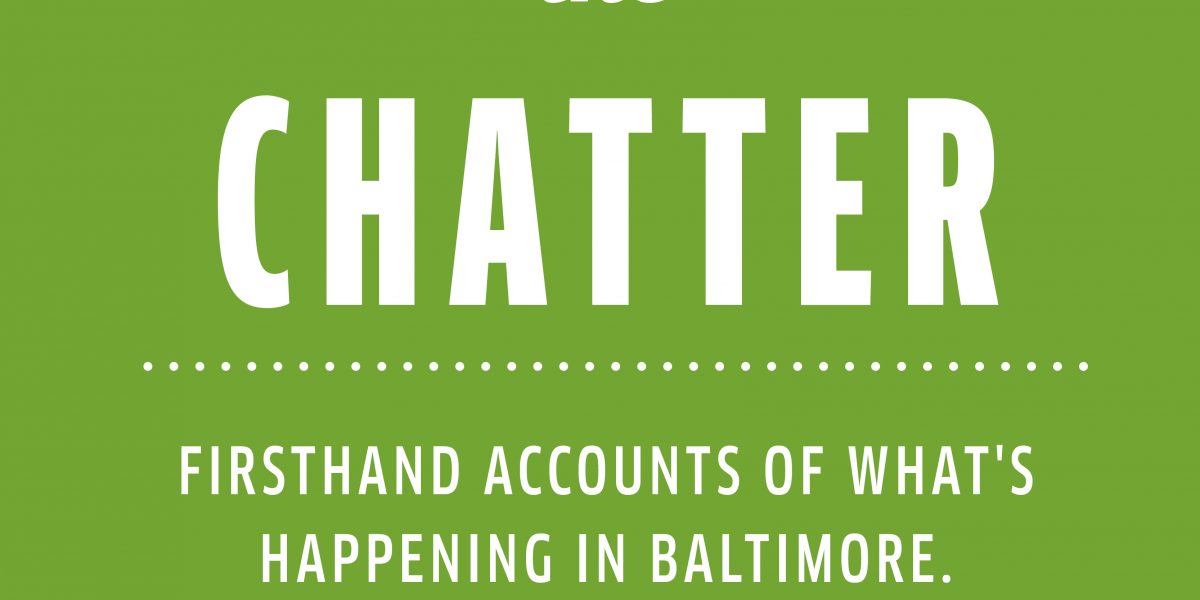News & Community
The Chatter
First-hand accounts of what's happening in Baltimore.
Home Court
August 9, 2014
Druid Hill Avenue
The squeals of high-tops and “pop, pop, pop” of basketballs pounding asphalt fill the sweaty, tense August air rising off the Cloverdale Park court. There’s barely a word spoken, let alone any trash talk, before former NBA All-Stars Gilbert Arenas and Metta World Peace (formerly Ron Artest) arrive—in T-shirts and long shorts like everyone else—to select 10 local players to take on the national “Ball Up Streetball” touring team tonight at Towson University. An American Idol-like competition for streetballers, there’s also a $100,000 contract and chance to join the professional Ball Up squad at stake.
“I’m looking for players with fundamentals, who are tough,” the Queens-born, 6-foot-7, 260-pound World Peace tells a cable sports outlet filming the tryouts. “Gilbert, he’s going to be looking for flashy guys who can finish.”
For 90 minutes, 75 players sprint through lightning-paced drills, half-court three-on-three games, and end-to-end battles punctuated with dunks, three-pointers, and ferocious blocks.
“All these people [here], the younger kids playing ball, checking everything out—we need more of this,” says JaJuan “Ice” Robinson, a former Dunbar guard who dropped several left-handed threes and later made the final roster, glancing around the park and packed bleachers.
Afterward, at midcourt, 6-foot-3 Stephen McCray, a recent graduate of St. Catharine College where he played forward, smiles following a call from his mother. “Oh, she’s happy I made the team,” laughs McCray, who threw down a number of rim-rattling slams. “But she was calling because I took her cell-phone charger when I left the house.”
Abiding Mom
August 23, 2014
Market Place
Sitting near the human-bowling ball cage—picture climbing into a 4-foot steel sphere and being pushed down a “lane” toward pins the size of boxing heavy bags—Dr. David Jaffe, 54, soaks in the action in Venice Beach muscle pants and a Japanese baseball T-shirt, calmly sipping a White Russian. A joint in one hand (okay, faux joint), Jaffe is, of course, impersonating “the Dude,” the radically laid-back protagonist portrayed by Jeff Bridges in the Coen Brothers’ comedy, The Big Lebowski. Given his attention to detail—authentic jelly sandals, for example—Jaffe wins “best male” costume at the first-ever Cult Classic Fest at Rams Head Live. Meanwhile, his wife, Brenda, creatively channels the never-on-camera Cynthia Sobchak, ex-wife of the Dude’s best friend, Walter, by donning a Hawaiian lei and pinning a photo of her beloved Pomeranian to her dress.
“We’ve watched it 75 times,” he says. “You find something new every time.”
The event offers virtual bowling and coconut rolling—bowling is the Dude’s main recreation (along with driving around and the occasional flashback)—a trivia contest, a screening of
The Making of The Big Lebowki, plus the film itself.
Kayla Meier, 19, wins best female costume, scissoring a bright red wig into avante-garde artist Maude Lebowski’s severe bob. Meier’s mother, a “dudette” in bathrobe, sunglasses, and oversized Bermuda shorts, takes second.
“I love the message,” Mary Ann Kinsella-Meier says. “The Dude is not competitive with other people, he’s forgiving, knows who he is, and lets things roll off his back. We need people to be more like that.”
Asked if her mother displays those qualities, her daughter smiles.
“Generally,” she says, paraphrasing the movie’s famous line, “Mom abides.”
Good Spirited
August 24, 2014
Falls Road
At twilight on a recent Sunday, David London, a magician by trade, welcomes 13 guests to the creepy space above the old stone Hampden Presbyterian Church. Among the relics on hand: a Victorian sofa suspended from the rafters, medieval rapiers, pickled animal remains, apothecary glassware, Renaissance-style portraits, dusty books on metaphysics, and a mounted deer head. London is not performing illusions or a religious ritual, per se, but hosting a more light-hearted, “Creative Spirit Séance.”
The idea is to have fun, he explains, “not to talk to your grandmother, but explore where ideas, dreams, and the imagination comes from.” Initially, guests participate in subconscious writing exercises and twist wire into random sculptures. Later, London provides a history of spiritualism, noting the Ouija board—used by Sylvia Plath (among others) for inspiration—was patented in Baltimore.
Moving to the séance area, he asks that everyone place their palms on the table and requests that the “Creative Spirit” make itself known. Eventually, a faint, ghostly voice (pre-recorded, we assume) comes across the 1970s transistor radio in front of London, who offers his own physical body to the spirit for use. After the sudden crash of a falling sword, London takes questions. “Does the ‘Creative Spirit’ have a sense of humor?” a woman asks, as London, rocking back and forth, struggles to remain in character and not break a smile.
“Yes,” the Creative Spirit intones through London. “We are in on the great cosmic joke—the mystery of life.”
